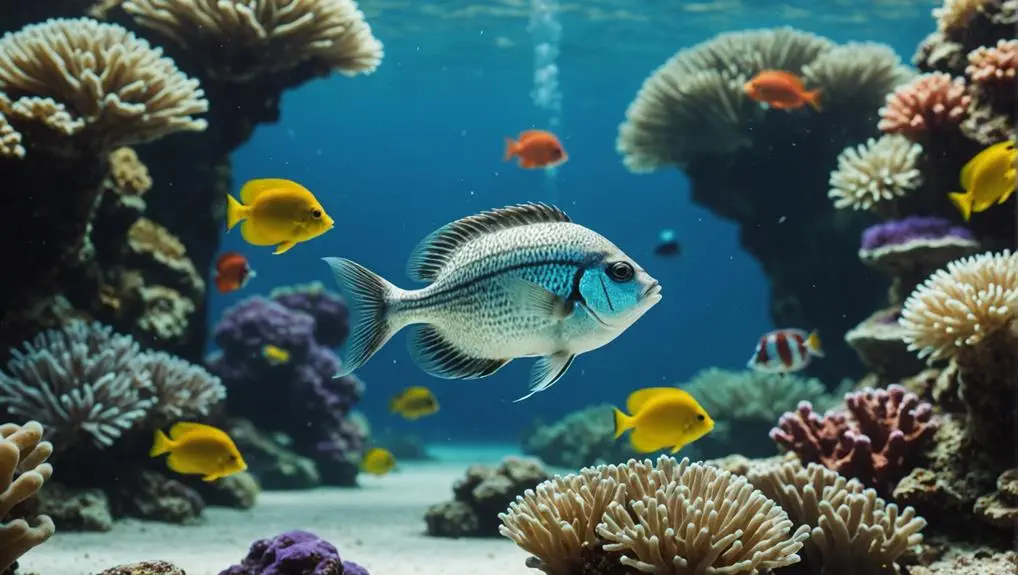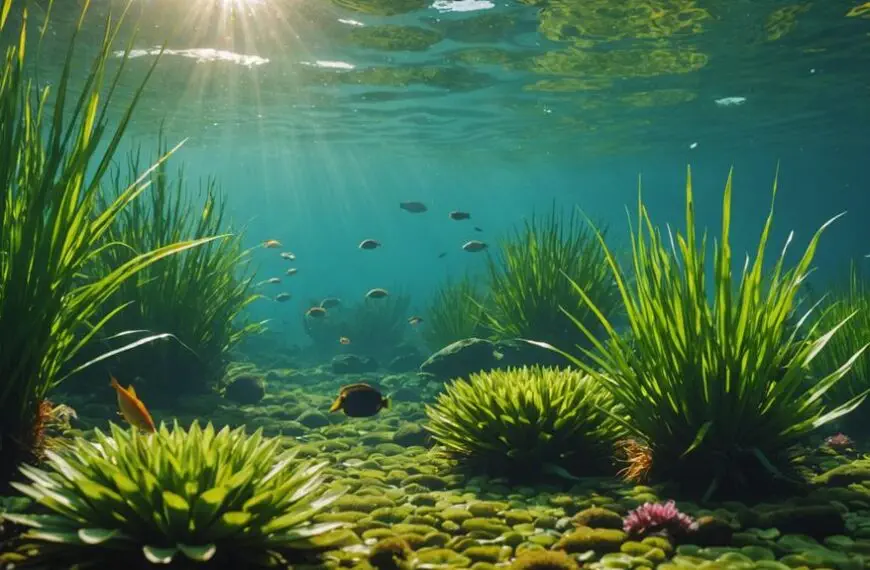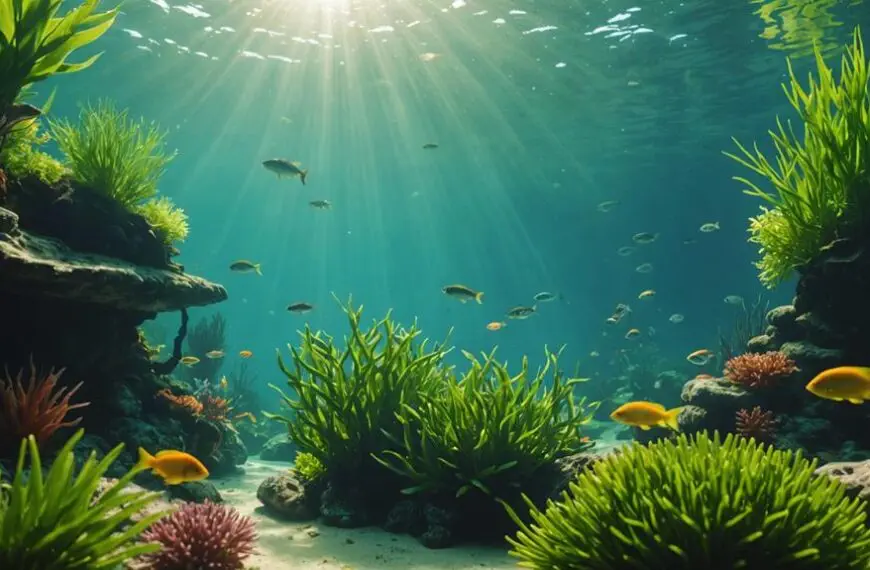Ethical sourcing for aquarium fish is all about making smart choices that benefit both the fish and the environment. It means opting for fish that are bred in captivity rather than caught from the wild, which helps protect vulnerable populations and fragile ecosystems. When you pick responsibly sourced fish, you're supporting sustainable practices and keeping your tank healthy. Plus, it's a way of saying "no" to shady collection methods that harm marine life. So, next time you shop for aquarium fish, think about how your choice impacts the bigger picture—it'll make you feel like a fish-saving superhero! Stick around to learn more about it!
Contents
- 1 Understanding Ethical Sourcing
- 2 Captive Breeding vs. Wild-Caught
- 3 Importance of Sustainable Practices
- 4 Impact on Local Ecosystems
- 5 Welfare Considerations for Fish
- 6 Consumer Responsibility and Awareness
- 7 Alternatives to Traditional Sourcing
- 8 Economic Aspects of Ethical Sourcing
- 9 Supporting Conservation Efforts
- 10 Frequently Asked Questions
- 11 Final Thoughts
Understanding Ethical Sourcing
Understanding ethical sourcing is essential for responsible aquarium ownership. When you choose fish for your tank, it's not just about the colors or patterns; it's about the impact on our oceans and ecosystems. Opting for captive bred species can really make a difference. Over 90% of freshwater species are bred in captivity, helping to ease the pressure on wild populations.
Additionally, choosing hardy species for your aquarium not only supports sustainable practices but also ensures a more enjoyable experience for novice aquarists characteristics and benefits of ideal beginner fish. However, many marine species are still struggling, so ethical sourcing practices are key.
You can support sustainable practices by avoiding endangered species and seeking fish from certified programs like the Marine Stewardship Council. This not only promotes healthy marine ecosystems but also ensures you're getting fish that have been treated well.
Remember, knowledge is power! Be aware of non-native species—they might look good in your tank, but they can wreak havoc on local habitats.
Taking care of your fish means setting up proper tanks and providing species-specific care. This will keep your aquatic friends happy and healthy while aligning your hobby with ethical standards.
Captive Breeding vs. Wild-Caught
When you're choosing fish for your aquarium, it's important to think about where they come from. Captive-bred fish are often healthier and help protect wild populations, but many marine species are still caught in the wild, which can create some serious sustainability issues.
Captive Breeding Benefits
Captive breeding offers significant advantages over wild-caught fish, making it a preferred choice for many aquarium enthusiasts. When you opt for captive-bred species, you're not just enhancing your tank; you're also helping the planet.
These fish are typically more resilient and adaptable than their wild-caught counterparts, so they adjust better to home aquariums. Plus, they often carry lower risks of disease, which means fewer trips to the vet—or, let's be honest, the fish doctor!
By choosing captive breeding, you're supporting sustainable practices and reducing the pressure on wild populations. Most freshwater species in aquariums are bred in captivity, contributing to biodiversity preservation while promoting responsible fishkeeping.
While only about 330 marine species are successfully bred in captivity, advancements in aquaculture techniques are expanding these sustainably sourced options.
Wild-Caught Sustainability Concerns
While captive breeding has its advantages, wild-caught fish present a complex set of sustainability concerns. You might think that bringing home a wild fish adds excitement, but it comes with serious implications. Many of these fish are taken from fragile ecosystems, like coral reefs, where poor harvesting methods can cause long-term damage.
Some collectors use harmful techniques, such as cyanide, which can wipe out entire populations and hurt biodiversity.
Moreover, you should consider the high mortality rates during transport. Believe it or not, over 99% of ornamental fish mightn't survive the first year after capture. That's a staggering number!
On the flip side, captive breeding is gaining traction. It allows for healthier specimens that thrive better in aquariums, reducing the pressure on wild fish populations. By choosing bred fish, you're not only supporting sustainable practices but also helping preserve the delicate balance of underwater ecosystems.
Importance of Sustainable Practices

When you think about adding a fish to your aquarium, it's important to consider how it's sourced.
Sustainable practices not only help keep our oceans healthy but also promote responsible collection methods that protect fish populations.
Benefits of Sustainability
Sustainable practices in the aquarium trade play a crucial role in preserving the delicate balance of our aquatic ecosystems.
When you choose ethically sourced marine fish, you're not just filling your marine aquarium; you're also helping to protect wild populations from overharvesting. Did you know that up to 90% of freshwater species are bred in captivity? This promotes biodiversity and helps keep our oceans healthy.
Supporting fisheries that implement responsible collection methods bolsters local economies, ensuring long-term sustainability.
Plus, captive-bred fish are usually more robust, which means they thrive better in your home tank. Fewer fish casualties mean less strain on natural habitats—talk about a win-win!
Responsible Fish Collection Methods
Responsible fish collection methods are essential for maintaining healthy aquatic ecosystems. When you think about sustainable practices, it's crucial to consider how fish are collected. Using nets instead of harmful chemicals like cyanide is a game changer!
Not only does this protect the fish you want, but it also safeguards other marine life and habitats. Organizations like the Marine Stewardship Council help you spot fisheries that follow strict rules for responsible fish collection. This means you can feel good about your choices in the seafood trade!
You're not just supporting local economies in places like Hawaii, Fiji, and Australia; you're also helping keep fish populations thriving. Ethical sourcing isn't just a one-and-done deal. It's about continuous improvement and commitment to better practices.
As fisheries evolve towards more sustainable methods, you play a vital role in encouraging this positive change. So, the next time you're considering adding an aquarium fish to your home, remember that your choices can impact the ocean.
Let's keep those underwater friends swimming happily while enjoying the beauty they bring to our lives!
Impact on Local Ecosystems
The impact of aquarium fish on local ecosystems can be profound, especially when non-native species are introduced into natural habitats.
Imagine a vibrant stream full of native fish, only to have newcomers swoop in and hog all the food! This can lead to habitat destruction and significant biodiversity loss as these aquarium species outcompete the locals.
When fish escape or are released into the wild, they can disrupt the delicate ecological balance.
Overpopulation of these foreign fish might result in fewer resources for native species, leaving them struggling to survive.
Local laws often govern the importation and release of fish, highlighting the need for us to understand native ecosystems better.
Welfare Considerations for Fish
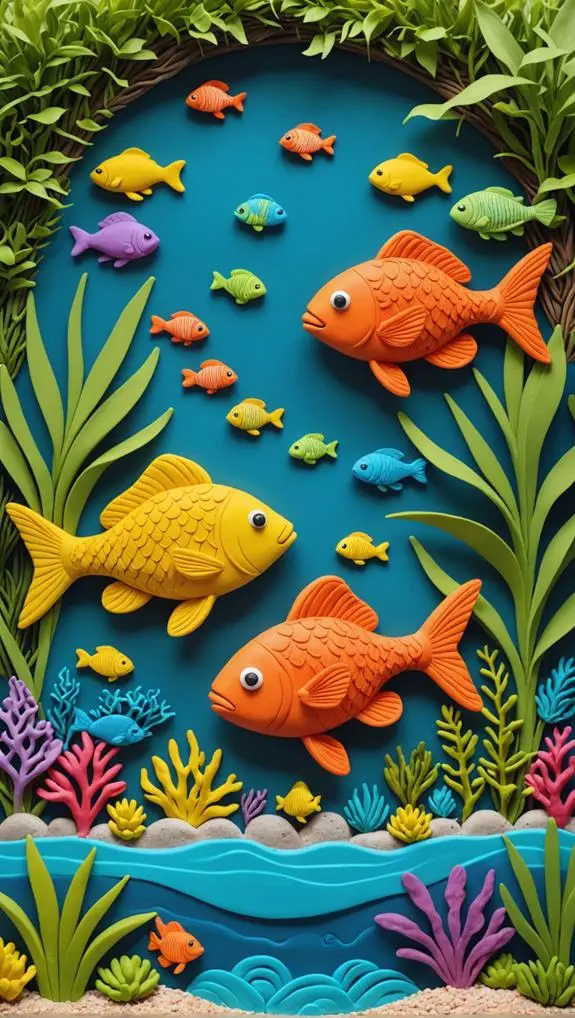
Many aquarium enthusiasts overlook the welfare considerations of their fish, often prioritizing aesthetics over the creatures' needs. It's important to remember that ethical fishkeeping means caring for your finned friends beyond just how they look in your tank. Here are some key aspects to consider:
- Tank Setup: Create a habitat that mimics their natural environment, including species-specific plants and hiding spots. Proper tank cycling is essential to establish beneficial bacteria and maintain water quality, which further enhances their living conditions.
- Avoid Overcrowding: Too many fish can lead to stress and illness, so choose compatible tank mates wisely. Maintaining optimal stocking levels contributes to a healthier environment and minimizes competition for resources.
- Monitor Water Quality: Regular checks ensure the water meets the specific needs of your marine species, keeping them healthy and happy. Testing parameters like pH, ammonia, and nitrate levels can help prevent health issues and support overall wellbeing essential water quality parameters.
- Diet Matters: Provide a diverse, high-quality diet to promote longevity and prevent health issues.
When you shop at your local pet store, look for fish that come from ethical sources. This not only supports responsible practices but also benefits the overall health of your aquarium.
Consumer Responsibility and Awareness
Understanding the welfare of your fish goes hand in hand with being a conscious consumer in the aquarium trade. When you choose to research sellers and farms, you're taking a crucial step toward ethical sourcing.
It's like being a superhero for aquatic life—your choices can make a difference! For instance, knowing about water quality management can help you understand the conditions fish are kept in. Avoiding impulse buys is another way to practice consumer responsibility. Think before you buy; that flashy fish mightn't come from a place that respects its well-being.
Engaging with local aquarist clubs can also be a game-changer. You'll learn from fellow enthusiasts and share tips on sustainable practices.
Plus, it's a great way to build a community that cares! Continuous education about responsible aquaculture helps raise awareness about the welfare of our finned friends. The more you know, the better choices you can make.
Alternatives to Traditional Sourcing

Exploring alternatives to traditional sourcing can significantly enhance your aquarium experience while promoting sustainability. By choosing eco-friendly options, you can support marine life and contribute to reef conservation.
Here are four great alternatives to consider:
- Virtual Aquariums: Enjoy the beauty of aquatic life without harming natural habitats. Virtual setups let you admire marine species from the comfort of your home.
- Aquaponics Systems: Combine fish farming with plant growth! This sustainable approach creates a mini-ecosystem, providing both delicious fish and fresh veggies.
- Native Species: Go local by promoting native species in your aquarium. This not only supports biodiversity conservation but also reduces the risks of introducing non-native species that can disrupt local ecosystems.
- Community Fish Rescues: Participate in local initiatives to rehome unwanted fish. This helps tackle overpopulation issues and encourages responsible fishkeeping.
Economic Aspects of Ethical Sourcing
While considering the economic aspects of ethical sourcing, you'll find that sustainable practices not only benefit the environment but also support local communities. By using sustainable collection methods, like nets instead of harmful chemicals, you help maintain healthy fish populations.
Sure, it might cost a bit more upfront for suppliers, but the long-term advantages are priceless.
Ethical sourcing creates jobs in fisheries and aquaculture operations, contributing to the economic stability of these communities. You might think that sustainably sourced fish would always come with a hefty price tag, but market competition often keeps costs in check.
Plus, with economic incentives like certifications from the Marine Stewardship Council, fisheries are encouraged to adopt these practices. This attracts conscious consumers who want to make a difference.
Transitioning from volume-driven sales to value-driven approaches helps prioritize quality over quantity. This shift benefits everyone involved, from suppliers to customers.
Supporting Conservation Efforts
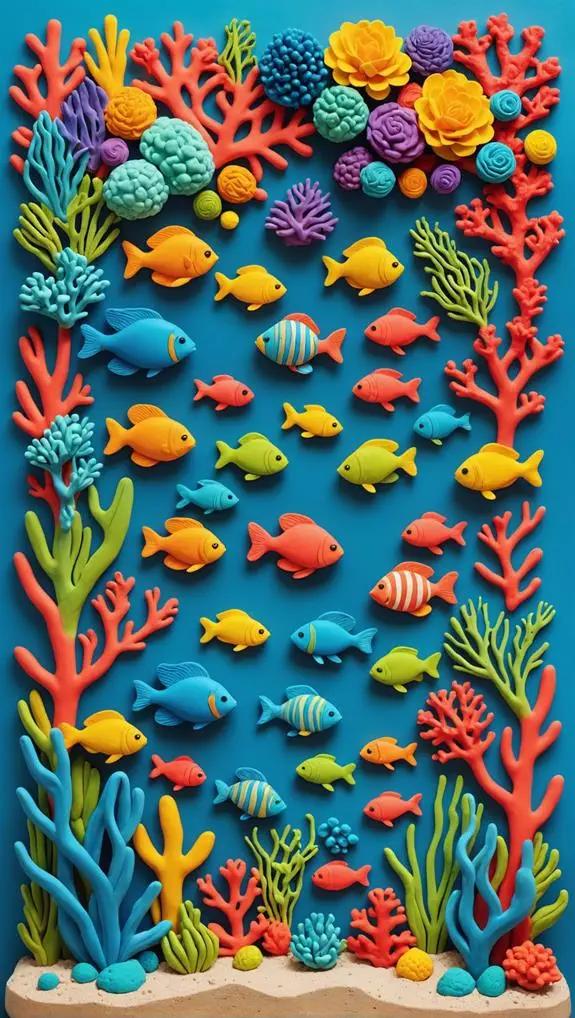
When you choose ethically sourced aquarium fish, you're not just making a purchase; you're actively supporting conservation efforts that help protect our oceans. You're taking a stand for marine life and ensuring a healthier planet for future generations.
Here's how your choices can make a difference:
- Support sustainable fisheries: By buying fish from certified suppliers, you help maintain fish populations and their habitats.
- Protect biodiversity: Avoiding endangered species means you're playing a part in preserving the delicate balance of ecosystems.
- Encourage aquaculture: Supporting captive breeding initiatives reduces the need for wild-caught fish, lightening the load on our oceans.
- Raise awareness: Your informed choices can inspire others, pushing for better practices and regulations in the aquarium industry.
Each time you opt for ethical sourcing, you're contributing to a wave of positive change.
It's like being a superhero for fish! By making responsible decisions, you not only enjoy the beauty of your aquarium but also champion conservation efforts that allow marine life to thrive.
Frequently Asked Questions
Are Aquariums Ethical for Fish?
You should consider fish welfare and habitat conservation when assessing aquariums' ethics. Balancing wild versus captive sourcing reflects our human responsibility to provide proper care, ensuring a positive environment for the fish you keep.
What Are Examples of Ethical Sourcing?
If you think wild capture's the only way, think again! Sustainable practices like aquaculture methods and conservation efforts show you can ethically source fish, supporting ecosystems while keeping your aquarium vibrant. Choose wisely, and make a difference!
How to Ethically Buy Pet Fish?
When you buy pet fish, prioritize responsible sourcing and sustainable practices. Make informed choices by researching sellers, ensuring they meet welfare standards, and favoring species bred in captivity to support ethical fishkeeping and biodiversity.
What Is the Most Ethical Way to Fish?
Fishing sustainably isn't just a noble quest; it's practically heroic! You can support community fisheries, prioritize fish welfare, and promote habitat preservation, ensuring future generations enjoy thriving ecosystems while enjoying the fruits of responsible fishing.
Final Thoughts
So, when you think about where your aquarium fish come from, remember this: buying wild-caught can mean supporting unsustainable practices, while choosing captive-bred fish often helps protect our oceans. It's like picking between a delicious burger that's been ethically sourced and one that's not—your choice impacts more than just your tank. By being mindful and choosing wisely, you can create a vibrant underwater world while also caring for our planet. Let's make fishy choices that feel good!

